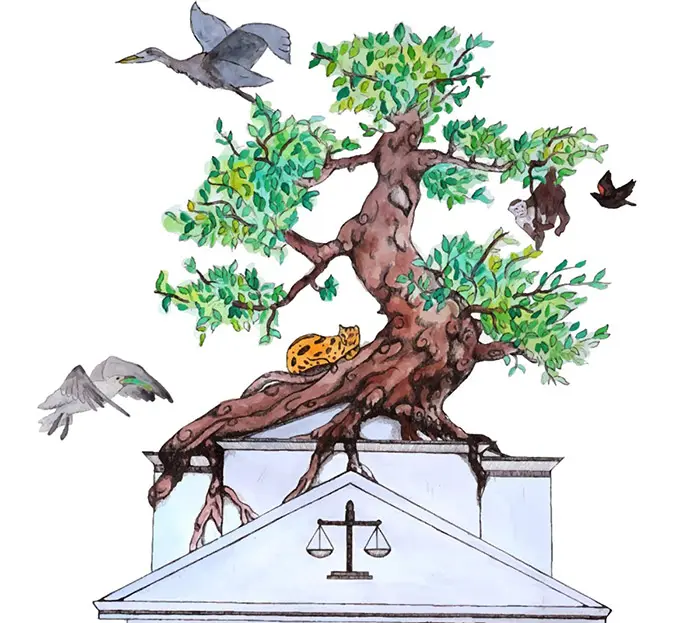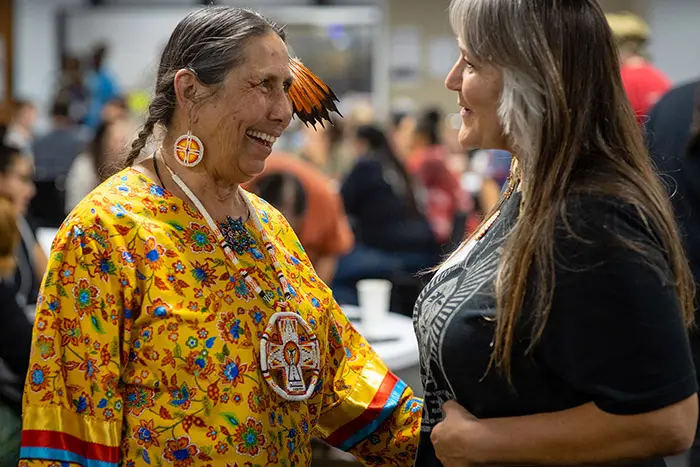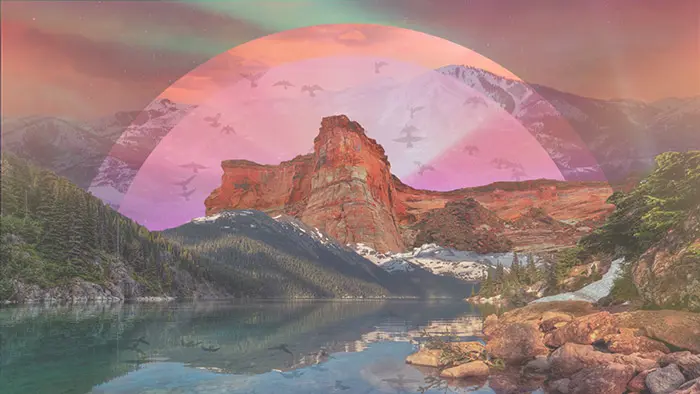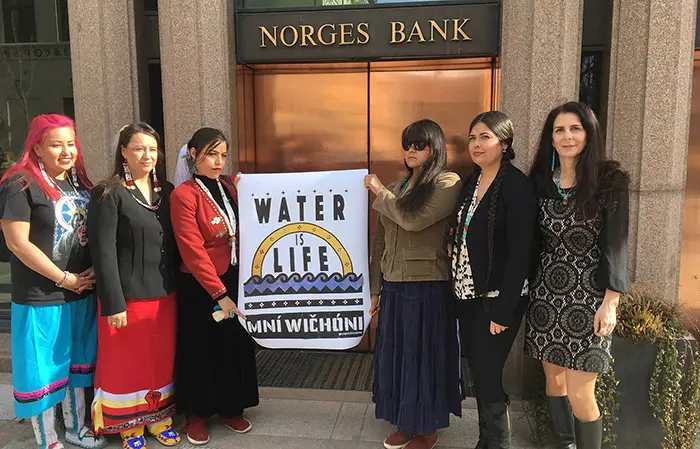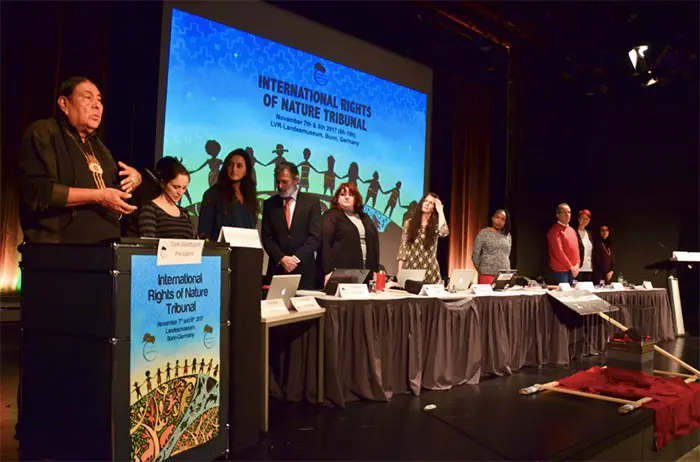Climate resilience as Rights of Nature

What it is: Rights of Nature, also called Rights of Mother Earth or Pachamama, is a budding legal movement, doctrine, and paradigm shift predicated upon an Indigenous worldview that humans live within, not above, the natural world. According to the Rights of Nature doctrine, ecosystems and the life forms supported within them have an inherent right to exist, flourish, and generate their natural capacities. If these rights are threatened or violated, then the ecosystem has the right to defend itself in a court of law from the source of harm, like an extractive development project or even climate change. While some people are taken back by the idea of granting legal personhood status to an ecosystem, it’s important to remember that the US Supreme Court extended legal personhood status to private corporations in 1886. And, as movement leader Casey Camp-Horinek reminds us in Climate Resilience, the fundamental rights of the more-than-human world are intrinsic whether or not they are recognized in courts of law.
Mother Earth’s rights are inherent. Any law that denies these fundamental rights are illegitimate and a violation of all the Natural Laws of Creation. Casey Camp-Horinek, Rights of Nature advocate and Ponca elder (source)
Some additional context: Many people accredit the emergence of the Rights of Nature legal movement with a 1972 law review article, “Should Trees Have Standing,” written by law professor Christopher D. Stone, who wrote that he was seriously considering giving legal rights to nature. It’s critical to note, however, that Indigenous and land-based peoples have deeply understood and respected the concept of innate rights of nature since time immemorial. It’s long been understood that all human rights, including the physical, mental, emotional, and spiritual well being of human communities, are derived from the rights of nature, as nature is the foundation of life itself.
Continue readingIndigeneity assumes a spiritual interconnectedness between all creations, their right to exist and the value of their contributions to the larger whole. At the core of Indigenous thinking is that coexistence relies on the ability of all peoples’ and living things’ voices to be heard and heard equally. Ladonna Harris, Founder of Americans for Indian Opportunity (Source)
In fact, it is the concept of nature as separate from humans, and as a thing that can be commodified, controlled, and dominated, that is relatively new. This worldview emerged as a central tenet of capitalism and colonization in the 15th century; early capitalists knew that people would not feel comfortable with the plunder of “a world where everything was alive and pulsing with spirit and agency, where all beings were regarded as subjects in their own right,” and so they strategized with philosophers, the Church, and scientists to shift how people related to the world around them (if you’d like to read more about the history of this phenomenon, consider checking out Less is More by Jason Hickel). As activist and educator Gopal Dayaneni explained in a workshop about rights-based organizing, “Rights are a new idea; we didn’t need rights until we had entire economic systems predicated upon violence and the infringement of rights.”
Thrillingly, the Rights of Nature movement has been gaining traction around the world for the past couple of decades. In Bolivia, Ecuador, and Panama, the rights of Mother Earth have officially been recognized. The Amazon River in Brazil, Whanganui River in New Zealand, Ganges and Yamuna Rivers in India, and all rivers in Bangladesh have been granted legal standing. Several tribes, like the Ponca, Ho-Chunk, and White Earth Nations, have passed laws enshrining the rights of nature, in part to resist fossil fuel development and other harmful projects, to mixed results.
Several municipalities across the so-called United States have taken a similar tact, though most have been met with resistance at the state and federal levels. In Orange County, Florida, for instance, 89% of constituents in the 1.4-million-person county voted in favor of a Rights of Nature amendment, only to find out that a 29-word clause was snuck into a 111-page state bill weeks prior that would prohibit local governments from recognizing the legal rights of nature. Similarly, after residents of Toledo, Ohio amended their municipal charter in 2019 to recognize the rights and legal standing of Lake Erie in an effort to protect the ecosystem from pollution and safeguard the city’s water supply, they received backlash at the state and federal level. A federal judge invalidated the Lake Erie Bill of Rights in 2020 for being “unconstitutionally vague” and exceeding municipal powers (after a lawsuit was filed by an Ohio-based agriculture business claiming that the measure would harm agriculture interests in the region), while the Ohio General Assembly approved a budget that expressly prohibits legal standing for ecosystems (at the behest of the state’s Chamber of Commerce).
There are glimmers of hope, though. For instance, after the small township of Grant, Pennsylvania was sued by the Pennsylvania Department of Environmental Protection (DEP) and Pennsylvania General Energy Co. for resisting an injection well via a Rights of Nature amendment in their town charter, Pennsylvania DEP revoked their permit for the injection well. These moments of success set a profound precedent for what’s possible.
Continue readingI think it’s our last and best hope to save the planet. Chuck O'Neal, environmentalist and Rights of Nature advocate (source)
Why it’s a climate resilience powerhouse:
Proactively protecting ecosystems
The Rights of Nature legal movement is a promising alternative to the regulation-based framework that has undergirded agencies like the U.S. Environmental Protection Agency, which has overseen a rapid decline in the country’s ecological health since it was formed in 1970. As Shannon Biggs and Mari Margil wrote in the 2011 book The Rights of Nature, environmental regulation has not only been futile in preventing or ameliorating ecological catastrophe, but “these laws actually codify, enforce, and uphold continued pollution and destruction rather than working towards ending such practices.” Rights-based frameworks, on the other hand, are proactive. Rather than test the bounds of harm that ecosystems and their inhabitants can endure, Rights of Nature laws seek to repair and avoid harm altogether so that ecosystems and their inhabitants can truly thrive.
Continue readingResisting fossil fuel development and other harmful projects
Rights of Nature laws are a potentially powerful tool to oppose fossil fuel development and other projects that both destroy surrounding ecosystems and exacerbate the climate crisis. In a system where the elevation of corporate rights over communities and natural systems is constitutionally embedded, Rights of Nature laws may be key in helping communities to resist projects that threaten their forests, rivers, mountains, deserts, lakes, and their own wellbeing. For instance:
- Ecuador enshrined the Rights of Pachamama into their constitution in 2008 and have since had several successful constitutional court rulings applying the country’s rights of nature laws. In 2021, Ecuador’s Constitutional Court ruled that mining in a protected region of a rainforest would violate the rights of nature, and therefore the government revoked mining permits granted to Enami and Cornerstone Capital Resources for exploratory operations within Los Cedros Reserve. In a country whose economy is still highly dependent on extractive industry and foreign investment, this was a landmark decision.
- In an effort to keep fracking out of Pittsburgh, a city that has experienced the toxic legacy of extractive industry firsthand, community organizers had to get creative, knowing that Pennsylvania allows fracking and state law says that municipalities aren’t allowed to regulate the oil and gas industry any more strictly than the state. When they learned about the Rights of Nature framework, they decided that that was their best bet, and then they set to work organizing. In 2010, the Pittsburgh City Council unanimously passed an ordinance awarding rights to nature and banning fracking.
- In 2017, the Ponca Nation became one of the first tribes in the country to enact a Rights of Nature law, not only to better align human law with natural law, but also as a strategic anti-fracking measure. In the years prior, Ponca, Oklahoma had become an epicenter for fracking and injection wells, resulting in poisoned water, land, and air, massive fish kills, hundreds of earthquakes in the region per year, and alarmingly high levels of asthma, cancer, and other disease. The passage of the Rights of Nature statute has successfully banned fracking on the Ponca Reservation.
Safeguarding Indigenous sovereignty
Rights of Nature laws may be a particularly potent tool for tribal nations across Turtle Island and beyond to safeguard their subsistence practices, sacred sites, and sovereignty on their traditional lands. For instance:
- In New Zealand, following 140 years of struggle over the Whanganui River, the Whanganui Maori passed a historic, precedent-setting law granting the river personhood status. With the passage of The Te Awa Tupua Act, the New Zealand Parliament appointed two guardians of the river, including one representative of the Maori people and one representative of the New Zealand government. Now, any project that could affect the river must go through the Maori representative and the local tribes, and the health of the river, fisheries, and surrounding ecosystems must be prioritized. The law doesn’t offer iron-clad protections for the river, and implementation of the framework can be messy and difficult, but it still has great potential to elevate Indigenous sovereignty, rights, and worldviews in New Zealand.
- In 2021, the White Earth Band of Ojibwe filed a lawsuit against the Minnesota Department of Natural Resources on behalf of sacred manoomin, or wild rice, in an effort to stop construction of Enbridge Energy’s Line 3 tar sands oil pipeline. Amongst several other counts (namely around honoring treaty rights), White Earth Nation contended in Manoomin v. Minnesota that the state violated the rights of manoomin by issuing a permit allowing Enbridge to use 5 billion gallons of water for construction and pipeline testing during a terrible drought, which threatened the manoomin’s ability to exist and flourish. The lawsuit has not been successful thus far, but the tribal rights of nature movement still holds tremendous promise in helping to protect ecosystems on tribal lands, enforcing hunting, fishing, and gathering rights on tribal lands, and potentially shutting down fossil fuel infrastructure and/or preventing fossil fuel development.
Recognizing and respecting the interdependence of all
The Rights of Nature framework may also be instrumental in instigating a larger economic, legal, political, and spiritual paradigm shift predicated upon a recognition of our interdependence with the more-than-human world, or as Casey Hamp-Horinek would say, “the oneness of all and the allness of one.” If the climate crisis is a crisis of disconnection, in which the dominant society continues to exploit, pollute, and extract from the natural world with little regard for repercussions, then the Rights of Nature movement can help to address the root of the crisis and usher in an era characterized by return to reverence, humility, and interconnection.
Continue readingThe nuance / caveats:
While the Rights of Nature movement has been gaining momentum and experiencing tremendous popular support, there are some important caveats to keep in mind:
- Rights of Nature laws have thus far been mostly symbolic and have not necessarily translated to meaningful enforcement or protection of nature, particularly in the US. A trial and error period is still needed to figure out how Rights of Nature can and should be utilized in providing long-term protection of ecosystems.
- It’s still very difficult (and expensive) to win legal battles using the Rights of Nature framework.
- Communities that get involved with Rights of Nature laws risk fierce legal backlash from corporations and governments. For instance, Grant Township, Pennsylvania is still in court, and facing bankruptcy, to defend its Home Rule Charter banning frack waste injection wells.
There is huge corporate resistance to the Rights of Nature framework, and since many politicians and political systems are influenced by corporate interests, there is huge resistance from western political systems, too. That’s because this framework could change everything. As co-founder of Movements Rights Shannon Biggs explains, “The law as we know it recognizes the earth and ecosystems as human property. Corporations can frack in communities or blow off the tops of mountains- that’s a privilege that’s been granted to corporations in this country. That’s not going to go easily.” So know that every Rights of Nature win will require patience, conviction, and stamina, but keep going.
Continue readingThe proof is in the pushback. Amy Westervelt (source)
Spotlights
Community Environmental Legal Defense Fund (CELDF) is a national, Pennsylvania-based organization committed to advancing the global Rights of Nature movement by supporting communities with their own Rights of Nature campaigns. CELDF was originally founded as a public interest law firm with a mission to protect the environment from harmful projects, but they soon found that it was incredibly difficult to stop such projects because so much of the US law system has been developed in conjunction with corporations. So they decided to think out of the box and switch up their tactics a bit. They have since assisted nearly 200 communities across the country in advancing Community Bills of Rights laws to recognize rights of nature, strengthen local, democratic control, contest corporate influence, and more. Today, they provide a range of pro-bono and low-cost legal services along with grassroots organizing support, public education, and outreach.
Check out the film Invisible Hand to watch their work in action in Grant Township, Pennsylvania, and consider supporting CELDF by making a donation to their organization and/or the Grant Township Legal Fund (CELDF is still supporting Grant Township in its ongoing legal battle to determine if they have the authority to protect their environment). You can stay informed of their campaigns and opportunities for action by joining their mailing list.
Continue reading about Rights of Nature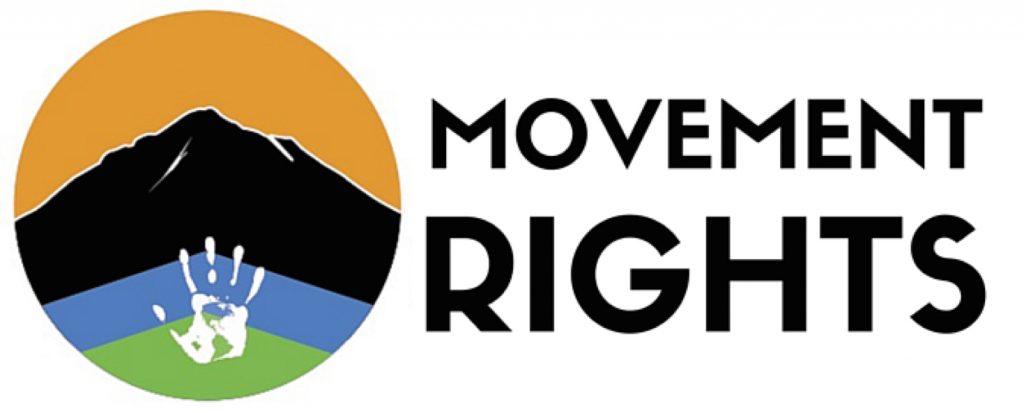
Movement Rights is a strategically small, women- and Indigenous-led organization focused on advancing frontline-led climate justice, Indigenous Rights, and the Rights of Nature. It was co-founded by Pennie Opal Plant and Shannon Biggs in 2014 on the premise that we must return to aligning human law and culture with the natural world. Movement Rights works to advance the Rights of Nature movement by providing research and reports, convening strategic gatherings, speaking at the United Nations, community meetings, regulatory hearings, and other events, and more. In 2017, they assisted the Ponca Nation of Oklahoma in making history as the first tribe in the country to recognize the Rights of Nature in tribal law. Today, Ponca elder Casey Camp Horinek co-leads Movement Rights’ Intertribal Rights of Nature (IRON) forums, connecting tribal communities across Turtle Island interested in or actively working on passing Rights of Nature into tribal law.
You can support Movement Rights by making a (monthly) donation and subscribing to their newsletter to stay abreast of campaigns and opportunities for action.
Continue reading about Rights of Nature
Bioneers Indigeneity program is a Native-led program within nonprofit Bioneers that explores and advances Indigenous solutions to pressing environmental and social issues. Bioneers has been active in the Rights of Nature realm since it became a global movement, and they were instrumental in Ecuador’s adoption of Rights of Nature in 2008. Today, they’re helping to cultivate an intertribal Rights of Nature movement by offering Rights of Nature workshops and trainings to Indigenous communities in the US, initiating deep dialogues, weaving networks, producing original media and educational curricula, and more. I first learned about Rights of Nature at a Bioneers conference many years ago!
You can support their work by tuning into their Indigeneity Conversations podcast (and leaving a review) making a donation, signing up for their newsletter, or attending one of their annual conferences.
Continue reading about Rights of Nature
Women’s Earth and Climate Action Network (WECAN) International is a climate justice-based and solutions-focused global initiative created to uplift the women’s movement for the planet and its people. Recognizing that women are disproportionately impacted by the climate crisis and environmental degradation but also hold the keys to many feminist, just, and community–based solutions, WECAN International works to strengthen the leadership of women and feminists on the frontlines, organizing and support community-led climate solutions projects, host educational events and trainings, produce media and storytelling efforts, advocate for thoughtful policy, bring together powerful women’s delegations and mobilizations, and more. They have worked to uplift the Rights of Nature movement, in particular, by hosting online and on-the-ground trainings and workshops, advocating for Rights of Nature at international convenings, producing thought leadership, and more, always while centering the struggles, wisdom, and voices of INdigenous peoples defending their ancestral homelands around the world.
You can support WECAN by making a donation and signing up for their newsletter to stay alerted about updates and opportunities for action.
Continue reading about Rights of Nature
Global Alliance for the Rights of Nature (GARN) is a global network of many organizations (including several of those listed above), communities, and individuals who are working to advance the adoption and implementation of legal systems that recognize, respect, and enforce Rights of Nature. They help provide the scaffolding and support for folks to create collective strategies, collaborate with one another, share best practices, and more (check out their regional and thematic hubs to get plugged in- they even have a hub for youth who want to get involved in the movement!). They founded the International Rights of Nature Tribunal, which is a global forum for people, and especially Indigenous people, to share concerns, solutions, and stories within the Rights of Nature context and to educate civil society, government, and the legal field about Rights of Nature and where the movement is heading.
Consider becoming a member of the alliance, making a donation, or getting involved with a GARN hub!
Continue reading about Rights of NatureResearch + reflection prompts:
- Are there any Rights of Nature efforts emerging in your region?
- Are any Rights of Nature cases around the world at a critical juncture and calling for resources or other forms of solidarity?
- Pick a Rights of Nature case to explore in more depth. In what ways has the effort been met with resistance? In what ways has the strategy been successful or could pave the way for success?
- How is your wellbeing and the wellbeing of your community bound up in the ability of local, regional, and/or global ecosystems to exist, flourish, and regenerate? What does interdependence with the more-than-human world look and feel like to you? In what ways could you honor this interdependence in your daily life?
How to get engaged:
Start a discussion
If you’re already engaged with your community or a local movement group: Start a discussion about the Rights of Nature movement. Host a screening of the documentary Invisible Hand. Gather friends to join a virtual Democracy School session through the Community Environmental Legal Defense Fund (CELDF). Organizations like Movement Rights will partner with your group to host an interactive, rights-based organizing workshop or all-day training. If you’re a tribal member, reach out to Movement Rights to learn more about their Intertribal Rights of Nature Forum offering.
Law training
If you have a background in law: Get trained so that you can offer pro bono assistance to the Rights of Nature movement. Look to organizations like the Earth Law Center and CELDF for trainings, learning resources, and networks to plug into. Check out Earth Law; Emerging Ecocentric Law- A Guide for Practitioners, a case book by Anthony Zelle, Grant Wilson, Rachelle Adam, and Herman Greene.
Organize
If the ecological wellbeing of your community has been impacted or is being threatened: Consider organizing with other community members to get a Rights of Nature amendment on the ballot in your municipality. Several organizations have programs in place specifically to assist communities in Rights of Nature efforts, so lean on their support and resources to guide you through the process. CELDF, for instance, offers pro bono and low-cost legal assistance and organizing assistance to community groups interested in advancing rights-based legislation.
Lend support
If you have access to financial resources: Lend support to Rights of Nature efforts around the world. Move resources directly to the communities who are leading the way or set up recurring donations to organizations like CELDF, Movement Rights, WECAN International, the Bioneers Indigeneity Program, or Global Alliance for the Rights of Nature.
Raise awareness
If you have a passion for the written word or content creation: Raise awareness about the Rights of Nature movement or a particular case. Write an opinion editorial for your local newspaper or share information with your social media network.
General best practices
Rights of Nature advocate Mari Margil says, “Protections are best shaped by the communities that wish to establish them, whether they’re concerned about drinking water, oil spills, or the survival of a certain plant or animal.” No degrees or professional experience is necessary to get involved in the Rights of Nature movement; your lived expertise is more than enough.
A smattering of resources for continued learning + action:
Short Reads
- Does Nature Have Rights? A Burgeoning Legal Movement Says Rivers, Forests, and Wildlife Have Standing, Too by Katie Surma in Inside Climate News
- Rights of Nature & Mother Earth: Rights-Based Law for Systemic Change by Movement Rights, Indigenous Environmental Network, and WECAN (report)
- The Rights of Nature- Can an Ecosystem Bear Legal Rights? By Tiffany Challe in Columbia Climate School’s State of the Planet
- Cities, Tribes Try a New Environmental Approach: Give Nature Rights by Alex Brown in Pew
- Rights for Rivers: Fighting for the Legal Rights of Nature by Michelle Nijhuis in Yes Magazine
- Living Ecologically is Illegal: The Rights of Nature movement offers a solution by Mark Ruffalo and Melissa Troutman in Yes Magazine
- Rights of Nature at the Border by Lorraine Eiler in Emergence Magazine
- Rights of Nature: Timeline by CELDF
- Rights of Nature timeline by Global Alliance for the Rights of Nature
Long Reads
- Rebelling Against the Corporate State: Forging a Community Rights Movement by CELDF
- The Rights of Nature: A Legal Revolution That Could Save the World by David R. Boyd
- The Politics of Rights of Nature: Strategies for Building a More Sustainable Future by Craug M. Kauffman and Pamela L. Martin
- Restoring the Kinship Worldview: Indigenous Voices Introduce 28 Precepts for Rebalancing Life on Planet Earth by Wahinkpe Topa (Four Arrows) and Darcia Narvaez
Watch
- ★ Invisible Hand: A 2020 documentary by Mark Ruffalo, Joshua Boaz-Pribanic and Melissa A. Troutment about the creation of Rights of Nature and the story of Grant, Pennsylvania’s battle to protect their watershed.
- Te Awa Tupua- Voices from the River: A 2014 documentary about the longstanding struggle of Whanganui iwi to reclaim guardianship over their ancestral river.
- The Rights of Nature: A Global Movement: A 2018 film produced by Isaac Goeckeritz, Hal Crimmel, and María Valeria Berros about the successes and challenges inherent to the Rights of Nature legal framework, from Ecuador and New Zealand to Santa Monica, California.
- Fast Fact Friday: Rights of Nature: A 2-minute YouTube clip from CELDF that makes for a great intro to the concept of Rights of Nature.
- Why lakes and rivers should have the same rights as humans: A 13-min TED talk by legal scholar Kelsey Leonard about why granting legal personhood to lakes and rivers is the first step to protecting our water and transforming how we value it
